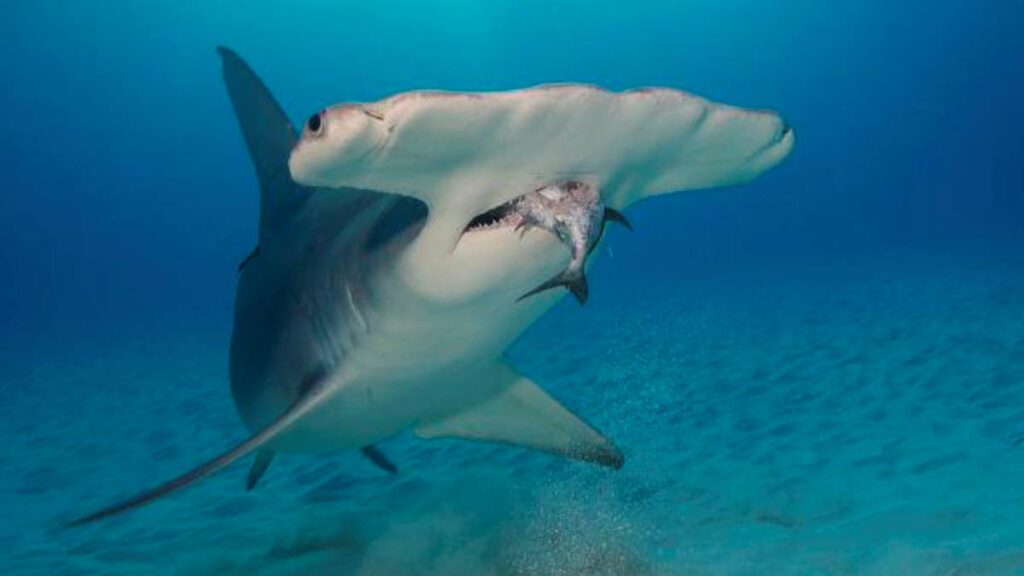Trinidad and Tobago the home of five hammerhead sharks

Did you know that of the ten known species of hammerhead sharks found worldwide, five are found in TT?
Of the five, the great hammerhead (Sphyrna mokarran), scalloped hammerhead (Sphyrna lewini) and golden hammerhead (Sphyrna tudes) are the most common species found.
Marine biologist Lauren Ali told Newsday Kids, “The thing with the great hammerhead shark is it gets huge and can actually get to the same size as the great white shark.
“We don’t see the great hammerhead that often because, being so large, it mostly lives out in the deeper ocean. However, like every other shark in TT, it is caught to be eaten.”
Found in large schools (groups), scalloped hammerheads have heads shaped like a double-head hammer.
Wired with sensing organs called ampullae of lorenzini, scalloped hammerheads can easily find prey buried in the sand on ocean floors.

Male scalloped hammerheads weigh more than 60 pounds and grow up to six feet in length while females can weigh more than 80 pounds and grow up to eight feet.
Ali said, “Scalloped hammerheads are the most common hammerhead species in TT’s waters followed by the golden hammerhead. Scalloped hammerheads are most abundant from November to March.”
The golden hammerhead shark is a charismatic animal given its head is a vibrant yellow hue especially during its younger head. The colour is a result of them eating a lot of shrimp when they are young.
Ali explained, “It’s a lot like how the scarlet ibis will eat shrimp which makes it red and the flamingos eating shrimp which makes it pink.
“As the golden hammerhead gets older, the yellow colour fades but it still maintains a yellowish colour.”
One of the earliest scientific papers describing the characteristics of the golden hammerhead in detail was done in TT.
“This study was back in the 1980s. A foreign guy named Jose Castro came and did studies on this species.
“So when I as a shark scientist goes into conferences, I also make it known I’m from TT and people always remember that is where Castro did the study on the golden hammerheads.”

Being apex predators – existing at the very top of the food chain – sharks help regulate the population of animals below them in the food chain. So they serve a key role in maintaining a balanced ecosystem.
As beautiful and important as these sharks are, Ali is warning that overhunting has left them in a precarious situation.
For example, the great hammerhead and scalloped hammerhead have both been classified as endangered by the International Union for Conservation of Nature.
The problem is compounded by the fact these sharks reproduce slowly and TT has little regulations for people catching them.
“It actually takes a large shark species as long as human takes to reproduce, so sometimes it can take more than 20 years for these sharks to reach sexual maturity.
“We can therefore see how sharks are engendered. If they are taking at times decades to reproduce and then they get caught, it’s never going to reproduce…if a shark is caught at 10 years, then it’s never going to reproduce.”
Like many other countries around the world, Ali wants TT to implement regulations on the size and amount of sharks that fishermen can catch depending on the species.

By doing this, Ali thinks shark populations will be given a chance to replenish.
Ali warned, “During recent studies, I spoke to some fishermen and the vast majority of them to me they have observed a decline in the overall shark catch over time.
“This is very alarming for the hammerhead sharks in TT because all of them are endangered.”

Comments
"Trinidad and Tobago the home of five hammerhead sharks"